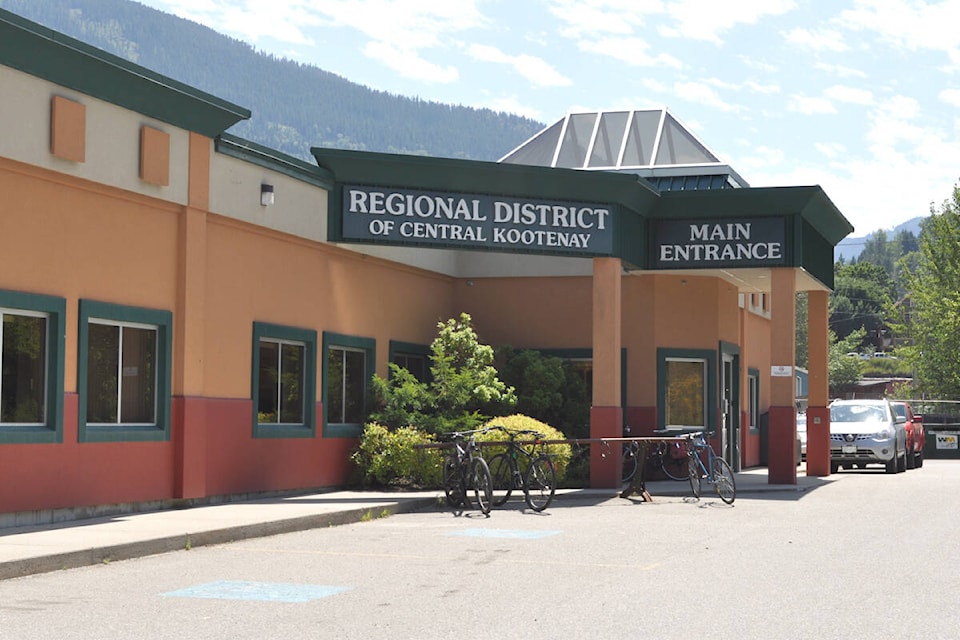by John Boivin
Local Journalism Initiative Reporter,Valley Voice
A plan to introduce new building rules to reduce the danger caused by wildfire in parts of the Regional District of Central Kootenay will continue to move forward this year.
A summary of the final report looking into how the RDCK can implement a wildfire development permit area (WDPA) program was presented at the RDCK board meeting on Jan. 19. Directors received draft regulations that can be tailored individually to the district’s 11 electoral areas.
A wildfire DPA is a set of development policies and guidelines that specify things such as subdivision design, fire-resistant building materials, and landscaping guidelines. The idea is to build wildfire resiliency by ensuring new construction in wildfire interface areas is less susceptible to wildfire hazards.
A consultant was paid about $66,000 in 2022 to hold public consultations and draft the wildfire DPA template and policy options. The project was fully paid for by a Union of BC Municipalities program.
The consultants found that while there was “moderate support” for adapting to living with wildfire, and some support for regulations, there was also strong opposition in some areas to what was perceived as imposition and government overreach of activity on private property. (About 33 per cent of respondents to one survey of 160 people opposed any regulation.)
However, there were no overwhelming concerns about increased costs for FireSmart materials or the ability of local supply chains to provide those materials, the report said.
There are other concerns, like the impact to staff workloads of new regulations, increased costs for construction, inter-government agreement on rules, and identifying just where the WDPA would apply.
But the report also notes that the benefits of using FireSmart principles can outweigh the costs by 10-20 times, with money saved in emergency response, recovery efforts, decreased risk of displacement and trauma, reduced home maintenance, and lower insurance rates (though the report also notes that in low-population areas those benefits may take years to accrue).
As for opposition to the concept, the consultants said a “paradigm shift” will be needed in behaviour and understanding of the issue for some property owners.
“Being FireSmart requires each individual to recognize that the actions they take will have an impact on their own well-being and the well-being of their neighbours. A single action will not be enough to prepare for the effects that a wildfire will have on homes in our high-risk communities,” the report says. “It takes the combined efforts of everyone in a community to act together.”
“Wildfires are happening in our regional district every single year and will continue to. A wildfire DPA is one step in the process of adapting to the climate crisis by becoming FireSmart.”
The report suggests that should a local area director want to consider implementing the wildfire DPA, a public information and communication campaign should be the next step.
“It is recommended that that information and communication campaign discuss the wildfire DPA in the larger context of all the tools and strategies that the regional district is employing to reduce the adverse impacts of wildfire and how the wildfire DPA complements these efforts,” the report says. “Sharing the benefits and rationale of the wildfire DPA can support the buy-in and compliance.”
Staff will now take some time to formulate a recommendation for implementation of the wildfire DPA “that meets the needs of organizations and communities in the region.” That recommendation is expected to come before the board in the coming months.
